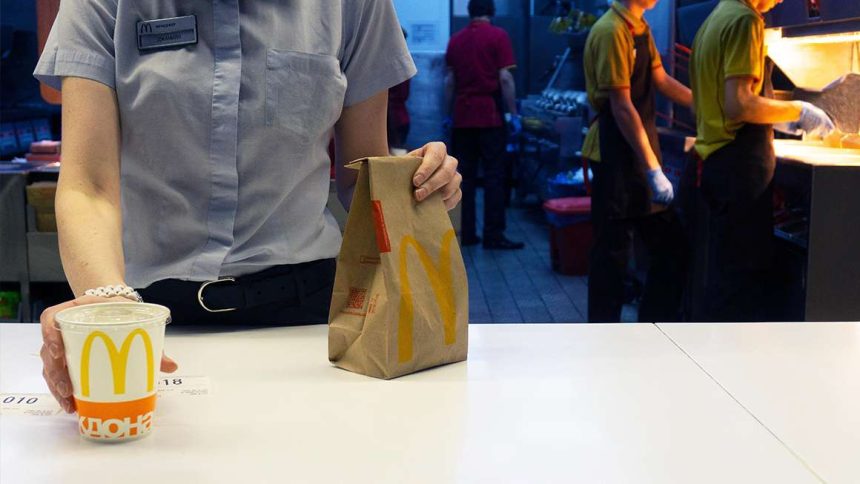In 2023, California passed a law requiring a $20 per hour minimum wage for all fast-food restaurants with more than 60 locations nationwide. Democratic Gov. Gavin Newsom portrayed the union-supported law as pro-worker, saying it moved the state “one step closer to fairer wages.”
Other California politicians supporting the law claimed it would provide a path to economic security for lower-income workers, enabling them to more assuredly put food on the table.
“Sacrifice, dedication, and the power of a government who serves its people is what got us to this moment,” said then-Assemblymember Chris Holden (D–Pasadena).
But the carve-out for smaller chains was an implicit acknowledgment that the law would come with costs—costs that smaller businesses with slimmer margins presumably could not afford. New research suggests that the mandate has also resulted in fewer jobs for struggling entry-level workers.
The law went into effect in April 2024 and increased the hourly pay of an estimated half a million workers across the state. But without the law in place, thousands more workers would likely have been employed.
That’s the conclusion of “Did California’s Fast Food Minimum Wage Reduce Employment?” a working paper published by the National Bureau of Economic Research by labor economists Jeffrey Clemens, Olivia Edwards, and Jonathan Meer.
The trio looked at fast-food employment in California and found a decline of 2.64 percent between September 2023 and September 2024—six months before and after the law went into effect. During that same time period, fast-food employment in the rest of the United States slightly increased.
Those different outcomes make it likely that the law caused fast-food businesses to hire fewer people, with a probable effect of lowering such employment 2.3 percent to 3.9 percent. At the middle of the range, that means about 18,000 fewer jobs in California.
For decades, Democratic politicians have touted minimum wage hikes while dismissing warnings of lost jobs. They were emboldened by studies purporting to show essentially no employment effect after fast-food wage hikes in the early 1990s.
But those studies looked at relatively small hikes in state-mandated wages, from $4.25 to $5.05, comparing just a handful of restaurants in Pennsylvania and New Jersey. The research was innovative. But blue state politicians used it to insist that minimum wage hikes could never meaningfully reduce employment, which is part of how California ended up with a $20 wage floor.
The real world results are now in, and the costs cannot be ignored. This is, to paraphrase Holden, the power of government. But it’s not to serve the people. It’s to hold them back.
The post California’s Fast Food Minimum Wage Hike Cost the State 18,000 Jobs. That Shouldn’t Surprise Anyone. appeared first on Reason.com.









